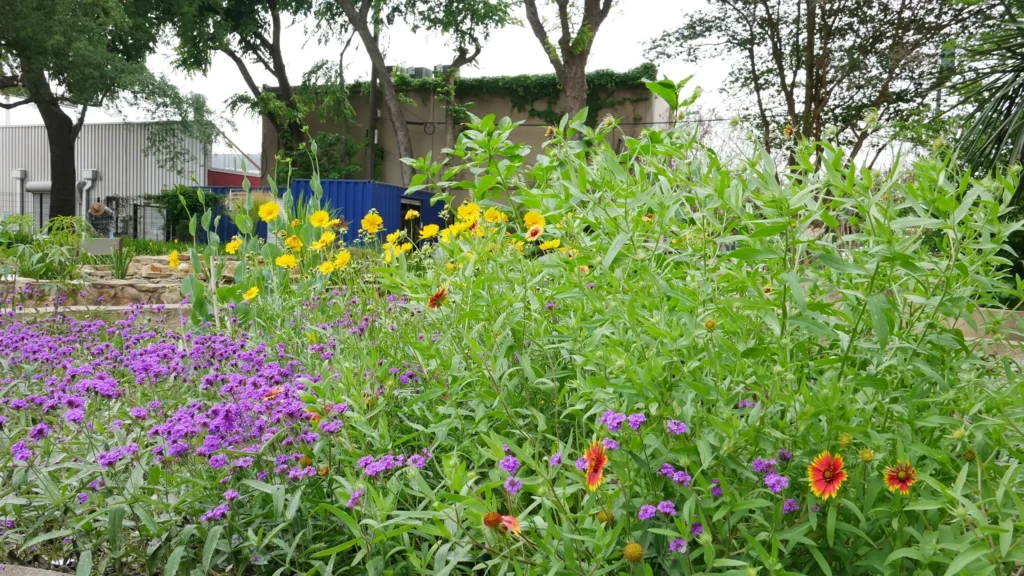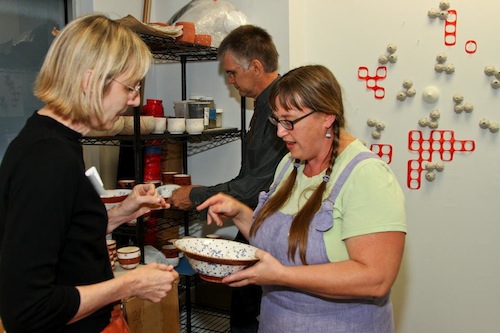
This week, we interviewed HCCC current resident artist, Chanda Glendinning, a ceramic sculptor whose work draws from her interest in the virtual communication networks that enable people to share and acquire information on a global level. Chanda is from rural western New York, where she received her BFA from Buffalo State College. She received her MFA in ceramics from Kansas State University.
Briefly describe what you make… What are you currently working on in your studio?
The quick answer is that I make installation work, using mixed media and multiples. The expanded version is that I am a hoarder, a magpie, a coveter of objects. I find objects with forms that I like and make a mold, converting bits and pieces of everyday life into porcelain “objects.” I make multiples of these objects and install them with other bits and pieces of things I have collected, working towards a place where whatever the objects originally were is familiar, but not quite recognizable. Mass-produced objects can be incredibly beautiful, but repeated exposure dulls our senses until we no longer think about what we see, what we hold, what we use as common objects and everyday tools.
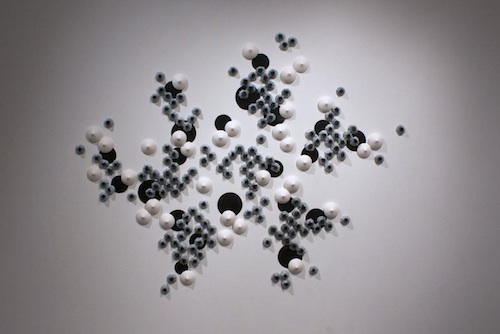
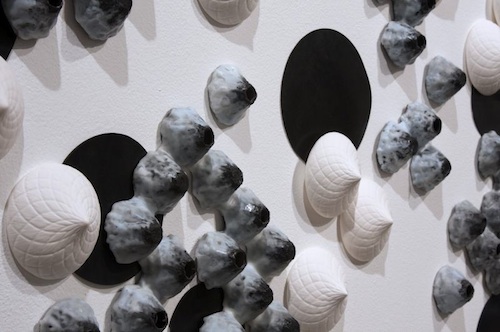
What techniques or tools do you use to make your work? Why porcelain? How is it different from other types of clay?
When I’m working with clay, my usual method is to make a plaster mold of a found object, converting open-vessel forms into closed 3D objects that can be installed on the wall. Once the plaster mold is completed, I slip-cast (pour liquid clay into the mold) my version of the object. The advantage of the mold is that I can make the same object over and over again, which is an important element of my work.
I use porcelain because I love the whiteness and fine texture. It speaks to me of purity, but also can be cold, distant or impersonal, depending on the context in which I use it.

Which do you prefer making: functional or non-functional pieces?
As much as I enjoy making bowls and cups, knowing that they will be held and used on a daily basis, nothing compares to being in the process of creating something larger than I am, that speaks in a different way to others. Trying to take bits and pieces from here and there, making connections among concept, context, history and materials in a manner that is unique and could only come from me – that’s what really gets me going, keeps me in the studio all hours of the night, and gets me back up the next morning.
The NCECA conference is being held in Houston this year and is fast approaching. What are you most excited about, and how are you going to be involved this year?
Yes, NCECA…. can’t believe it’s almost here. Self-centered artist that I am, the thing I am most excited about is my exhibition, mass/produced, which will be at Spring Street Studios March 20th – 23rd. At the conference itself, I’m looking forward to having time to attend some of the lectures, particularly those focusing on the interactions among curator, artist, gallery and work.
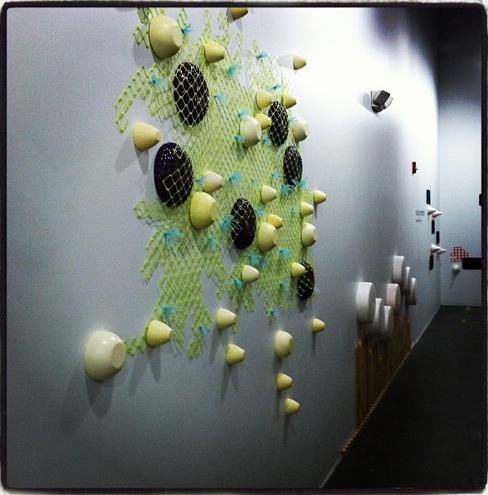
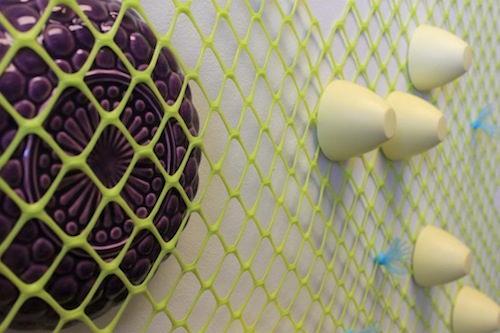
I have to say that it’s been pretty amazing to be involved behind the scenes in the massive undertaking that is the annual NCECA conference, to be a member of the host community and see the incredible efforts that make this event happen. Personally, I’m coordinating the exhibitions at Spring Street Studios and lending a hand as needed with the NSJE and other exhibitions, which is just a small part of what’s happening. From my experience as the Student Director of NCECA, I knew that putting together a conference of this magnitude was an amazing effort for a volunteer board of 14 and an office staff of 7, but now I understand how this gets done–through labors of love from the many, many, many talented and dedicated people in the host community.
What do you enjoy most about Houston?
Right off the top of my head, I really enjoy my mornings. I love waking up to birds singing every day, sun shining through my dining room windows, that quiet stillness of potential that the day holds. Being able to walk out the door and around the corner to my studio just heightens that feeling, the joy of knowing that I don’t have to get in my truck and drive anywhere, I can walk and breathe, and enjoy the sunshine and warm weather. I suppose this makes more sense when you know that I’m from Buffalo and live 9 miles from the closest anything back home.
When did you start incorporating found objects in your work? What is their role or significance?
During my final year of grad school, I started making molds of found objects. Eventually, the molds of the objects weren’t enough, and I needed the contrasts of color and texture and material and content that I could only get by using objects as I found them. There’s a history that is carried forward in an object that has already had a life. In combining new and old objects, materials, textures, even colors, I layer and weave together their histories, giving sometimes hidden context to the work I create.
The residency here at the Craft Center has been great, allowing me the time to question my use of materials and methods, historical vs. contemporary craft, “craft” vs. “art” and how all of these things fit into my own work. My work no longer starts with a lump of clay, wondering what I’m going to make today. Now it starts with those found objects, and trying to decipher why I am so fascinated with them.
What’s your favorite Tex-Mex dish?
Tamales! Any kind of tamales, I love the cornmeal — that slightly dry texture, contrasted with a savory filling, maybe some gooey melted cheese…. Yum!
